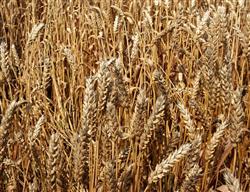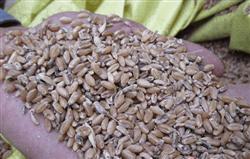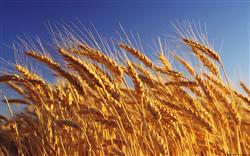How to prevent yield reduction during wheat harvest?

How to prevent yield reduction during wheat harvest? What factors will lead to a reduction in production? The ripening process of wheat includes two stages: the wax ripening stage and the complete ripening stage, and the best harvest period is the last wax ripening stage. Because the 1000-grain weight of wheat reached the maximum at the end of wax ripening, the harvest yield was the highest at this time. If the harvest time is inappropriate, too early or too late, it will lead to a reduction in production. At present, it is common for farmers to harvest wheat too early or too late, which should attract the attention of the majority of farmers. The suitable period for wheat harvest is very short, usually 3mur5 days, and timely harvest is also a guarantee of high yield and bumper harvest of wheat. The harvest is too early, because the grain filling continues before the end of wax ripening, if harvested at this time, the grain filling is insufficient, and the grain water content is high, which artificially leads to the decrease of 1000-grain weight, mechanical damage and impure threshing separation in the threshing process, resulting in the degradation of wheat quality and yield. If the harvest is too late, after the end of wax ripening, the accumulation of dry matter in the grain stops, the root system begins to senescence, but the plant is still breathing, and the necessary nutrients are absorbed from the wheat grain, which can easily lead to "nutrient reflux" and decrease the 1000-grain weight. In case of overcast and rainy weather, it is not only easy to cause consumption of grain contents due to respiration, reduce 1000-grain weight, but also often cause panicle sprouting or grain mildew, which seriously reduces the yield and quality of wheat. The plant becomes brittle due to excessive water loss, and the wheat ear is too dry, which can easily lead to mechanical damage such as ear breaking, ear breaking, grain dropping and other mechanical damage during mechanical harvest, reducing wheat yield. At the same time, some wheat grains will be blown off in case of strong wind, and then the yield will be reduced. Finally, remind farmers to harvest wheat must be appropriate, too early or too late, are not advisable. Click to get more wheat planting technology click to get more grain planting technology
- Prev

How to prevent sprouting and mildew in wheat harvest?
How to prevent sprouting and mildew in wheat harvest? Is there any way to often encounter rainy and waterlogging weather during wheat harvest, resulting in panicle sprouting or grain mildew, which not only seriously affects the yield, but also results in the decline of wheat quality, storability and seed quality, and brings losses to agricultural production and farmers' income? The preventive methods are as follows:.
- Next

When is the right time to harvest wheat?
When is the right time to harvest wheat? What method can determine the harvest time? The yield of wheat harvest is the highest and the best in the middle and late stage of wax ripening. The middle and last stage of wheat wax ripening can be determined by the following methods: first, observe the grain. The seeds are generally orange in different shades, and can be seen horizontally after being cut with a knife.
Related
- The first cup of black tea in spring, the flavor and history of tea gardens in Kenya, Africa
- The computer can not only choose potatoes, but also grow tea rice. AI will grow winter oolong tea champion.
- It is not only the inflated tea bitten by insects, but also engraved with the four seasons tea in Beipu.
- The Oriental Beauty Tea Festival in Zhuxian County takes the stage at the weekend to experience the plus-size feast of oil tea.
- & quot; Oriental Beauty Tea & Exploration of Emei in Hsinchu, the hometown of quot;
- The new variety of strawberry "Tainong 1" dessert is the first choice with mellow aroma. Crimson gorgeous
- History of Tea in Taiwan: from Wild Inner Mountain to Export Tea Garden
- Two types of Taiwan Oriental Beauty Black Tea won the British three-Star Award for Childhood Tea Xiang Zhang Jiaqi changed from pilot to champion tea maker.
- Banana species and varieties: the planting history of Taiwan Xianren banana and dwarf banana is long, is banana disease resistant?
- Coffee planting Technology: Qianjie Coffee from Seedling to harvesting

